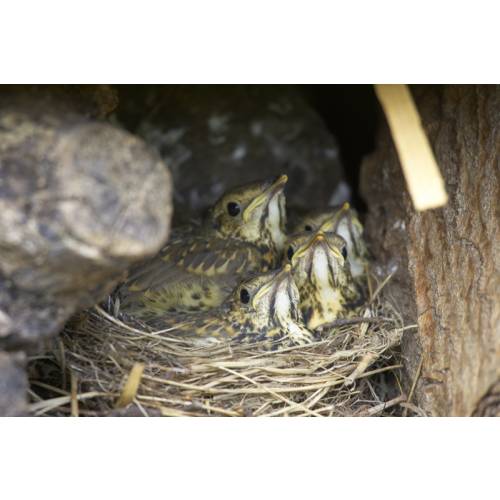
Ecological Garden
Protecting the birds
- Details
-
Birds are adorable... except when they peck away at your sweet cherries! However, did you know that most birds, even those that we think of as quite common are in fact in decline? Your garden can be a haven for these creatures and help fight against their decline.
Above all else hedges and trees
Of all the favourable sites that you can offer birds, the deciduous (looses leaves in winter) hedge is without doubt the best. It is not really the lack of food that threatens the preservation of birds but the lack of nesting sites. A good number of the birds in our gardens nest in hedges. A dense network of branches is most useful to them. What are the best plants for this? The hawthorn! Its thorns protect the young hatchlings from the nest raiders, meaning the enemies of the young chicks (crows, rats, cats…and squirrels!). In the autumn, its berries will cheer up the fruit feeding birds who will feed themselves on the fruit through the winter. All types of hedge will be useful but the birds prefer ones with broad leaves and most will avoid coniferous hedges (except in mountainous areas).
If you have, a hollow tree then let the birds benefit from it! This type of refuge has become very rare and it is certain that woodpeckers, nuthatches, bats and little owls will all fight over it!
The best plants
As well as the hedge, grow some plants that will feed the birds during winter when the North wind blows! Cardoons, cotoneasters, hardy cornflowers, dogwoods and mountain ash are some of the best plants. However, some of the large grained grasses and several other trees (birch, alder and hazel nut) will also provide welcome extras. Apple trees with small decorative fruit like the variety ‘Everest’ are also much appreciated. It is in fact a tree that is doubly ecological, in the springtime, it attracts the nectar gathering insects ensuring the production of the apples and in the autumn, it feeds the birds!
What sort of nest?
Despite the presence of a hedge in the garden, many birds will still lack a nesting site, like tits and little owls. If you are handy then you can build a nesting box. Whether it is home made or bought make sure that the nesting box is practical. Birds have very specific needs and some of the more fantasy themed models are not useful...
Install the nesting box in a well-exposed position; on an east-facing wall sheltered from the prevailing winds. It is best that no branches touch the roof as this makes it easier for nest raiders to access it.
Do not forget something to drink!
Birds often get thirsty in our gardens. To try to quench this thirst they often peck at apples and tomatoes, causing unwelcome damage! The best solution is to give them something to drink by placing shallow basins around the garden. A basin for every 400 to 500 m² of garden in an open place is perfect. Make sure that the water is always clean, especially in summer. In winter change the water regularly but do not add hot water as this can cause a fatal thermal shock to your little friends! - Photos (2)


